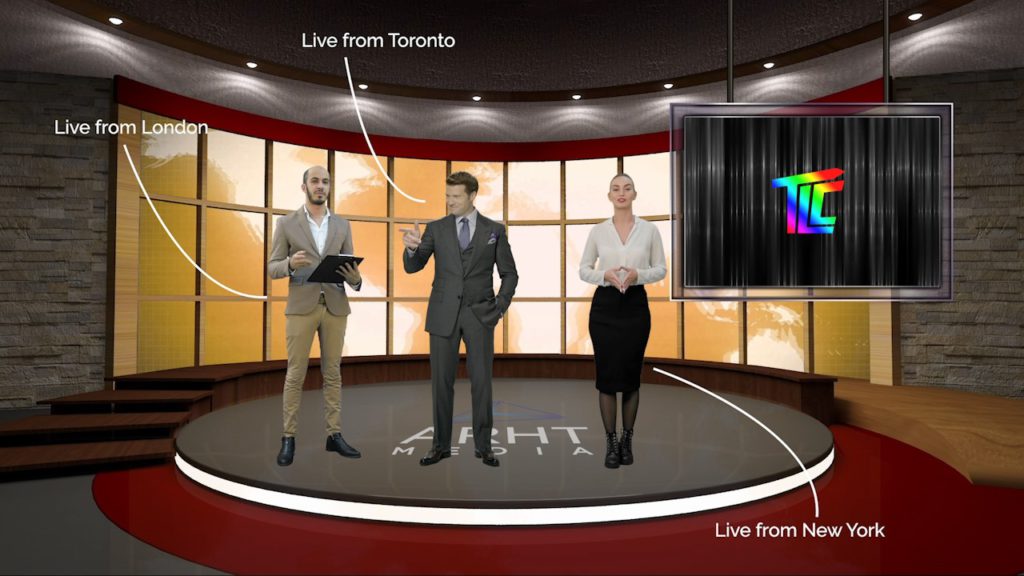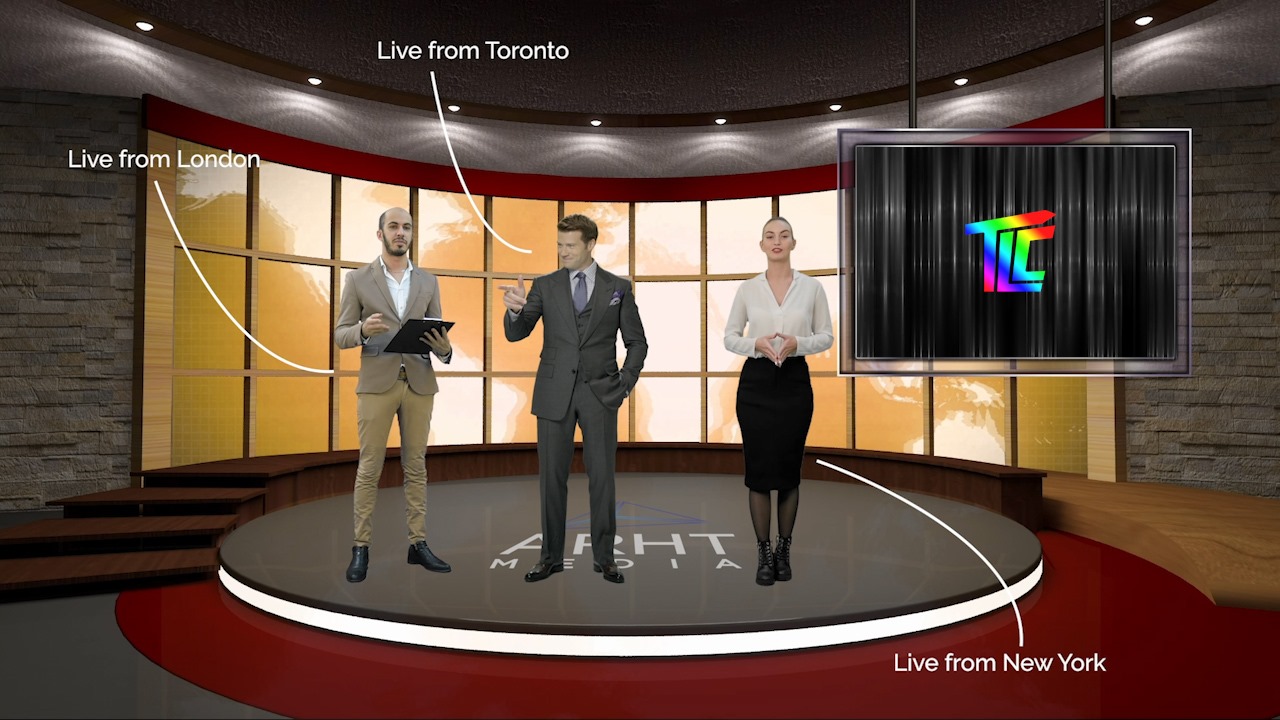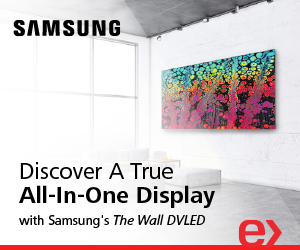This is part one of a three-part blog series on ARHT Media’s new Holographic TelePresence technology, distributed in the U.S. exclusively through Almo Professional A/V. Look for part two in the coming weeks.
Almo Professional A/V and ARHT Media, Inc. have an exciting new partnership and offering that could transform the landscape for digital meetings, events and hybrid/virtual learning. This new solution, in fact, could enhance almost any application in which a face-to-face interaction or presentation, prior to COVID-19, would have been the norm. The technology, developed by ARHT, is called Holographic TelePresence, and Almo is now the exclusive U.S. distributor for it. Through this solution, we can deliver a unique and highly engaging holographic display experience like never before.
What does this mean for you? Is interactive holographic display technology really something to pay attention to right now?
Holographic teleconferences are here to stay. ARHT’s 3D hologram meetings aren’t just intended to create a one-off “wow” moment — though they definitely do that, and it’s certainly a plus. The real value is when you find a technology platform that helps you overcome a bigger business issue. In the face of COVID-19 today, that bigger business issue is a lack of engagement with remote work, digital and virtual events, and (seemingly endless) conference calls.
The end goal is that participants, both online and in-person, want to use hologram media again and again. ARHT’s hologram tech makes this possible. The technology is ideal for panels, trainings in conference rooms, or even town halls. Hologram tech also amplifies product launches, hologram advertising, hologram teleconferences, hologram trade show displays, and more.
What Is Holographic TelePresence?
The solution, Holographic TelePresence, powers hybrid events that take place both online and offline simultaneously — possible alongside a new feature of the platform called the Virtual Global Stage (VGS). The technology, HoloPresence (or “holographic presence”), enables presenters to appear remotely, as holograms, in front of an audience to speak and interact with them in real-time.
A bit more about how it works:
- Presenters appear in lifesize proportions with the capacity to interact with audience members (and the other panelists) virtually. As you saw from the above video, the virtual stage design is clean and to realistic proportions; plus, you can virtually stage a room to your liking.
- The Virtual Global Stage is powered by the same proprietary transmission software in ARHT’s new hologram technology; it allows you to “beam in” multiple presenters into any virtual, online environment. The Virtual Global Stage feature is great for applications like large meetings, conferences and events.
- Both live and prerecorded hologram appearances are supported for a range of applications — like elevated guest lectures, trade shows, and advertising and marketing campaigns.
This solution completely amplifies virtual interactions, online presentations, and hologram services in a way that your customer has never seen. With it, organizations, advertisers, and event marketers can reach a proportionately larger audience and deliver a premium hologram presentation that goes well beyond the 2D video call. Meanwhile, presenters benefit by being able to use key aspects of natural communication, like body language, to deliver a more engaging message and experience to attendees.
How Do Holograms Work on Stage?
What does the audience actually see when experiencing one of ARHT’s holograms? Proprietary HoloPresence displays — lifelike “holograms” that give a sense of presence and being in the same room as the hologram presenter. Those hologram presenters are realized through augmented reality. (Insider tip: the “ARHT” in ARHT Media stands for Augmented Reality Holographic Technology.)
Quick explanation: The word “hologram” has, perhaps confusingly, become synonymous with any 3D imagery. It’s worthwhile to make the distinction between ARHT’s hologram technology and various illusion effect techniques, like Pepper’s Ghost, used to achieve a 3D effect. Know that we’re using the term “hologram” as a ubiquitous understanding of the final result — lifelike images that appear to the audience as holograms, 3D images in mid-air.

Anyway, any AV arm wanting to add holographic technology to its wheelhouse should understand the different techniques to achieve a 3D effect on stage — and the costs of each. Take ARHT Media’s resurrection of James Naismith, for example. Here, Holographic TelePresence was even more innovative and cost-effective than projections using Pepper’s Ghost. Instead, ARHT’s photorealistic “HumaGram” technique is behind the effect.
If you need proof, Dr. David Lefevre, director of the Imperial College’s Edtech Lab and an ARHT Media client, gives it to you. Dr. Lefevre said to the BBC, “The problem with Pepper’s Ghost is that it can be intricate to set up and can cost about £150,000 to run an event.”
Referencing Holographic TelePresence, “This is simpler — you project upon a glass screen, and a backdrop behind it uses software to give it an illusion of depth. It runs at the low thousands each time, so for the first time universities can afford it,” Dr. Lefevre added.
Low Cost, High Reward: Why Now Is The Perfect Time for 3D Holographic Display Tech
What do hologram solutions do that traditional video doesn’t?
First, there’s a wow factor you don’t get with 2D video conferencing. While holograms seem to be a part of our everyday lives in film, it’s not every day that you actually see this type of presentation technology as such an attainable reality.
Viewers also benefit from more lifelike content, too. In a classroom, for example, presentations from human holograms — whether a guest lecturer or students’ everyday professor — help aid in retention and engagement. The more we can replicate real-life interactivity in our virtual spaces, the more it’ll be embraced.
Even though we all miss that in-person interaction, it is no longer the only way we do business. The mass deployment of video conferencing solutions in early 2020 was a big step forward for AV — but video chat and 2D video conference software only scratches the surface of what’s possible. Holographic TelePresence brings prime-time to all of us and completely enhances the way we interact virtually.
Get in touch with Almo today for more information, and visit www.almoproav.com/holographic-telepresence to talk to your regional service development manager about Holographic TelePresence.








